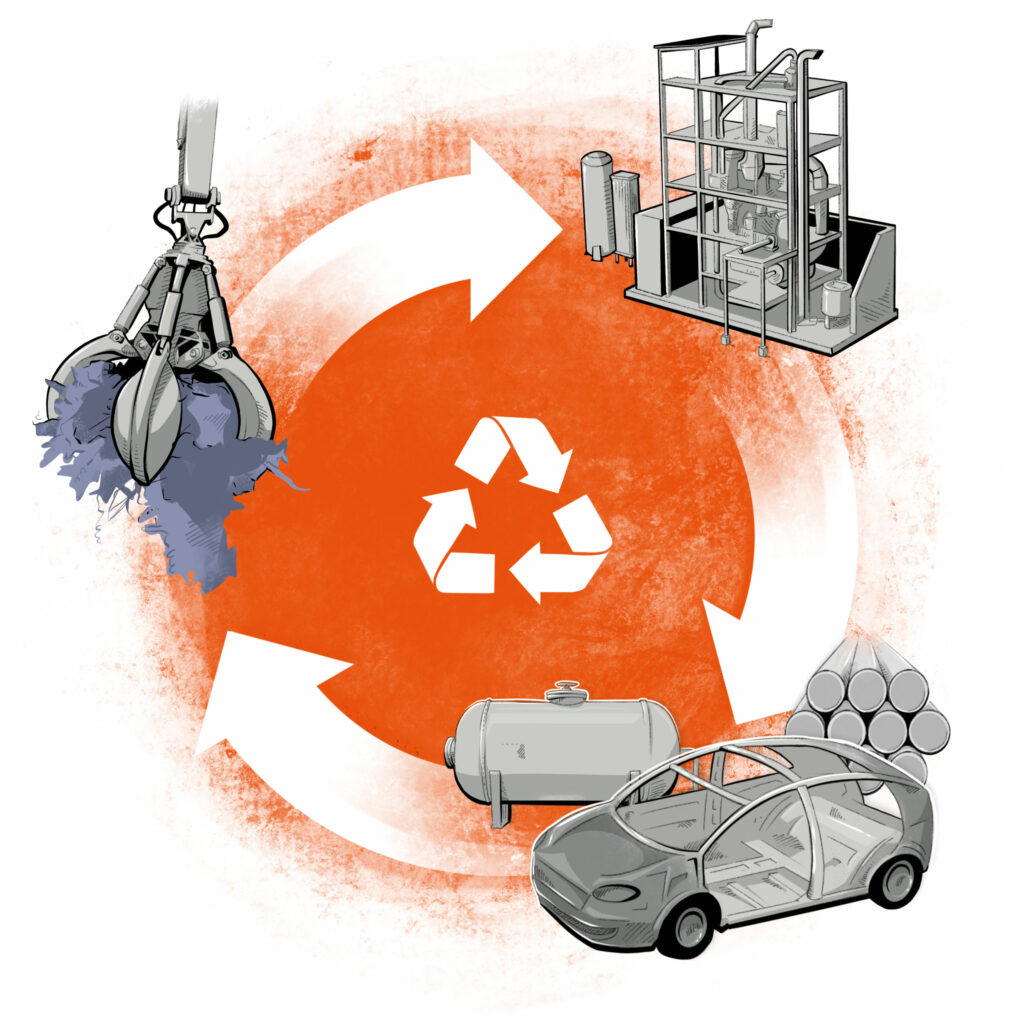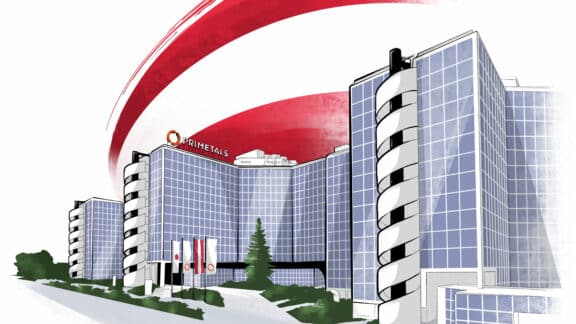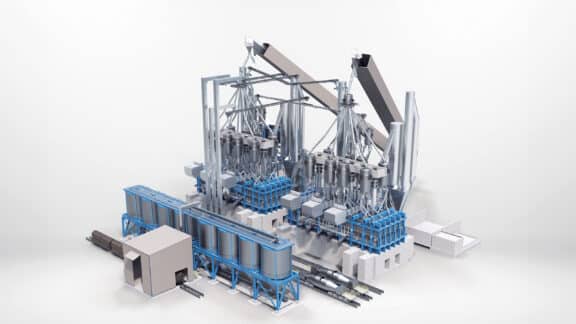Few artificial intelligence solutions have stood in the limelight quite like ChatGPT by developer OpenAI. Entire industries are fearing the disruption the technology may bring. Others look forward to a world in which many arduous, time-consuming processes will be automated or directed to the AI for execution. But how much does ChatGPT know about the metals business? Does it have the insight required to support steel producers in achieving long-term sustainability? We asked the AI to discuss the ten most important factors for producers wanting to become greener. Our series continues with a focus on the circular economy, carbon capture, and emergent policies and regulations.

5. Circular Economy
“The circular economy is a model that emphasizes the reduction, reuse, and recycling of materials and resources to minimize waste and promote sustainability. In recent years, the circular economy has gained increasing attention as a way to address the environmental challenges posed by our linear “take-make-dispose” economic model. Steel production is resource-intensive, with significant amounts of raw materials and energy required to produce steel products. However, the majority of these resources are lost during the manufacturing process, leading to significant waste and environmental impact. By adopting a circular economy model, steel producers can reduce waste, increase resource efficiency, and minimize their environmental impact. There are several ways in which steel producers can adopt a circular economy model. Firstly, steel producers can focus on using recycled steel in their production processes, thereby reducing their reliance on virgin materials and minimizing waste. Secondly, steel producers can develop closed-loop production processes that maximize resource efficiency and minimize waste. This can involve the reuse of waste materials, the implementation of energy-efficient production processes, and the use of renewable energy sources. Finally, steel producers can build partnerships with other companies and stakeholders to create a more integrated and sustainable value chain.
Steel producers that adopt a circular economy model can benefit from increased efficiency, reduced waste, and improved environmental performance. This can also lead to cost savings, as the reuse of materials and resources can reduce the need for virgin materials and lower production costs. In addition, the circular economy model can help steel producers differentiate themselves from their competitors and attract environmentally conscious customers. By focusing on circular economy principles, steel producers can demonstrate their commitment to sustainability and differentiate themselves from competitors who are still relying on linear production models. The strategy is also a means of appealing to consumers who are willing to pay a premium for sustainable products. This way, steel producers can generate new revenue streams and improve their financial performance.”
6. Carbon Capture
“Carbon capture and storage (CCS) is a critical factor in making steel production more environmentally compatible and sustainable. As the industry faces increasing pressure to reduce its carbon footprint, producers must prioritize the adoption of CCS technology to avoid falling behind their competitors. One way steel producers can adopt CCS technology is by retrofitting existing plants with CCS equipment. Retrofitting existing plants can be challenging and expensive, but it allows producers to reduce their carbon emissions while continuing to use their existing production infrastructure. Another approach to adopting CCS technology is by building new plants that are designed with CCS technology in mind. New plants can be designed to integrate CCS technology from the outset, making the process more efficient and cost-effective. Mitsubishi Heavy Industries Group (MHI Group) is one of the companies that has been actively developing CCS technology for the steel industry. In 2020, MHI Group announced a partnership with world-leading steel company ArcelorMittal to explore the feasibility of using CCS technology at ArcelorMittal’s plants. MHI Group is also working on a project in Norway to capture CO2 emissions from a waste-to-energy plant and transport the captured CO2 to a nearby industrial site for storage. The project uses MHI Group’s proprietary KM CDR process, a post-combustion carbon capture technology. Steel producers are well-advised to consider the potential competitive advantage that comes with adopting CCS technology. Those who can offer low-carbon steel products may have a significant competitive advantage over those that cannot.”
7. Policy and Regulations
“Governments around the world are increasingly concerned about the environmental impact of industries, including steel production, and are implementing policies and regulations to reduce emissions, protect natural resources, and promote sustainable practices. But steel producers can also leverage policy and regulatory changes to create new opportunities. For example, government incentives for renewable energy and energy efficiency can provide financial support for companies that invest in sustainable technologies. Producers can also engage with policymakers and regulators to help shape policies that are favorable to their business and promote sustainable practices. This can involve participating in public consultations, sharing best practices, and advocating for policies that promote sustainable production methods. In doing so, steel producers can demonstrate their commitment to sustainability and help shape policies that support their business objectives. By engaging with government officials and advocating for policies that align with their sustainability goals, producers can help create a more supportive regulatory environment.”
JOIN THE CONVERSATION!
Having read the AI’s ideas on the green future of metals production, what are your thoughts? Are you amazed with the level of knowledge on the steel industry that ChatGPT has already accumulated? Or do you feel that the AI’s answers were a bit on the shallow side? Join the conversation and let us know your opinion by sending an email to metalsmagazine@primetals.com


